Hot air balloons are one of the oldest forms of human flight. The Montgolfier brothers, from Paris, France, were the first to invent and fly the earliest rendition of a hot air balloon back in 1783, more than a century before the famous Wright Brothers would take flight. As with most successful inventions, modifications and improvements have been plentiful over the years, but the same basic principles remain; heated air inside a balloon makes it buoyant since it has a lower density than the colder air outside.

Although impractical for travel since you cannot steer a balloon and it only travels as fast as the wind can carry it, experiencing flight from the basket below an enormous balloon is serene. Your perspective on the world around you will change as you suddenly get an unobstructed bird’s eye view of the ground, which is slowly retreating beneath your feet. Seeing hot air balloons in flight early in the morning over a picturesque landscape has always fascinated me. I wanted to learn more, so I reached out to Gary Fehr, owner of Air-ristocrat Balloon Rides, to get a deeper understanding about flying a hot air balloon. What follows is an in-depth look at Gary’s unique journey from pizza place to pilot, what it takes to fly a balloon, and how he’s ensured equal opportunity access to everyone.
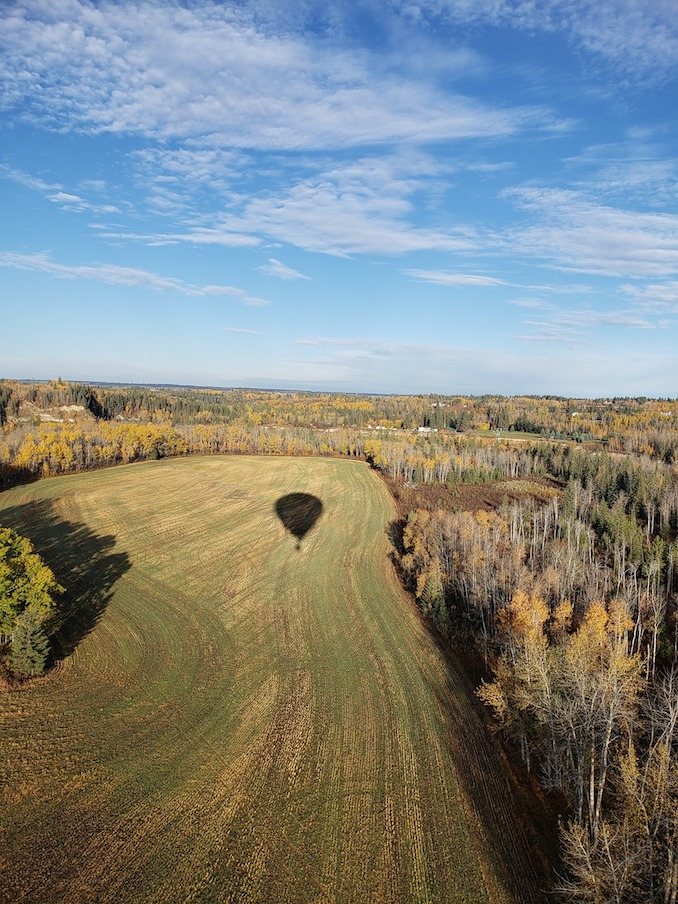
Calgary Guardian: “How did you get into hot air balloons?”
Gary Fehr: “I lived in Calgary off and on since the ’70’s and used to see balloons all the time, but never really thought anything about them except they looked cool. In ’95 I had a little pizza place and one day while flipping through the newspaper I saw an ad for balloon chase crew. That piqued my interest so I called to see what was involved. A few hours in the early morning fit with my schedule so I went to check it out. Balloon chasing is kind of like storm chasing, only without the storm, so I had a great time and decided to keep doing it. Since I was available every weekday morning and a competent driver I became the new ‘golden boy’. By the end of the season the pilots were asking when I was going to start training. I just said ‘why, I’m having fun doing this.’ By the end of the second season the owner of the company said, ‘we really like how you work, so if you’re interested we’ll train you as a pilot and give you a job.’ The old saying is that if you can’t stand the heat, get out of the kitchen, so I dropped the pizza place and picked up a couple 12.5 million BTU burners!”
CG: “What type of training/education/certification is required to be a hot air balloon pilot?”
GF: “Balloon pilots are Transport Canada certified and we have to follow all the same rules as other aircraft. With that in mind there are some rules that just don’t apply to the regular operation of a balloon. For example, I will never be asked to hold short of runway 34, but I still have to know what that means. All pilots are required to pass a medical and have a radio operator certificate. There are PSTAR and PIBAL tests through Transport Canada, ground school, and flight training through a certified flight training unit. The minimum requirements are 10 hours of ground school and 16 hours of dual flight with an instructor. New pilots aren’t allowed to fly over a built-up area until they have 50 hours. To put that in perspective, I have around 1500 hours.”
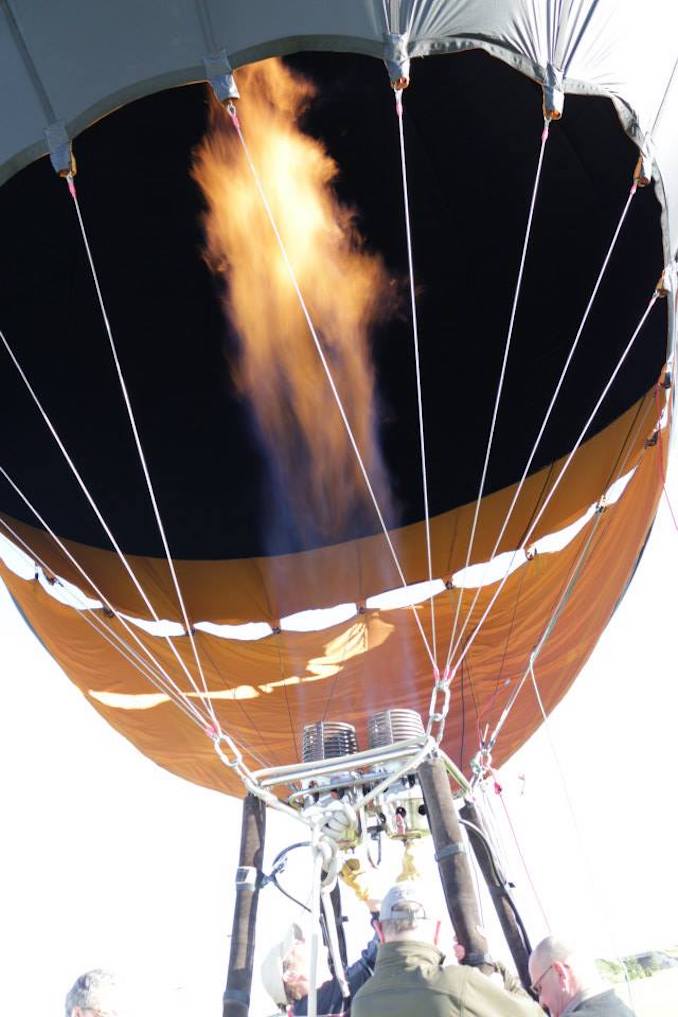
CG: “What type of weather conditions are best suited to flying?”
GF: “The short answer is light surface wind, but that depends on the flight you want to do. For passenger flights a perfect weather day is a cloud base of 5000′ or more, surface wind at 10 km/h or less, 500′ wind 20 km/h from X degrees and 1000′ wind 30 km/h from X + 90 degrees. That’s ideal for Red Deer, but that may be a bad forecast for someplace like Kelowna because they are in a valley. If I’m taking skydivers up, I want light wind all the way to 10,000′. If I’m doing a long distance flight I want 100 km/h at 10,000′. Balloons travel at the speed of the wind so if I’m in a balloon and going 100 km/h I won’t feel a breeze until I go through a wind change or ‘shear’. Really hot weather will also keep a balloon on the ground. The hotter it is outside the more heat you need inside to create the same lift and over temping an envelope will shorten its life considerably. Ballooning is a very zen-type of experience as you are literally one with the sky.”
CG: “What’s the best thing about your job as a pilot?”
GF: “The best thing about my job is that every day I go to work it’s a special day for my clients. A balloon ride is usually a once in a lifetime thing, so every flight it’s either somebody’s birthday or Christmas or anniversary or graduation or bucket list. In my 20+ years of flying I have seen 49 couples get engaged and the ashes of 3 souls spread. No other job can say that.”
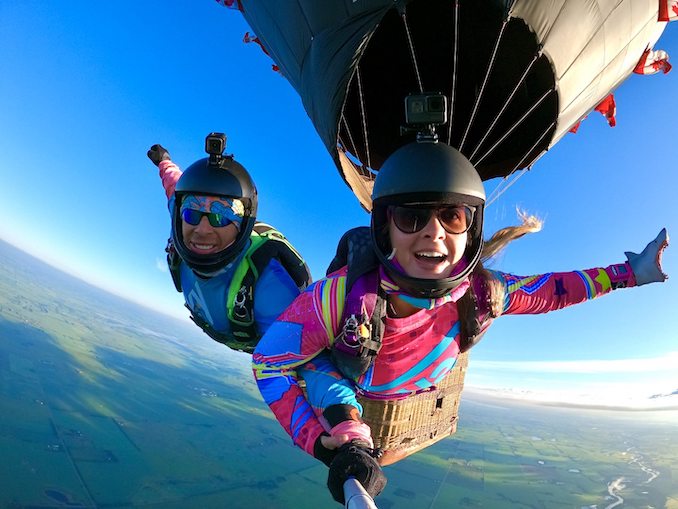
CG: “No, you’re right, they can’t say that! So then, what’s one of the most challenging things about your job?”
GF: “The most challenging thing about this job, without a doubt, is telling those people that we can’t fly today because the weather is not cooperating. The technical name for a hot air balloon is an ‘aerostat’. Think of static in the air. What that means in a practical sense is that a balloon will do whatever the air mass is doing, and there are a lot of weather conditions that will keep a balloon on the ground. Safety is always our number one priority.”
CG: “How did Air-ristocrat come to be?”
GF: “I’ve always been entrepreneurial, so once I decided to change careers, owning a balloon and flying for myself was the end goal. I left Calgary and moved to Red Deer. I had friends there and knew the area; it is a nice place to fly and that’s where I decided I was going to be, when it was time. Once I had enough hours to fly commercially I went to Saskatchewan for three years. The company I worked for was sold and I ended up transferred to Winnipeg. The ‘Peg’ is a nice place to be from, so after two years there I moved back to Red Deer and started Air-ristocrat Balloon Rides in 2003.”
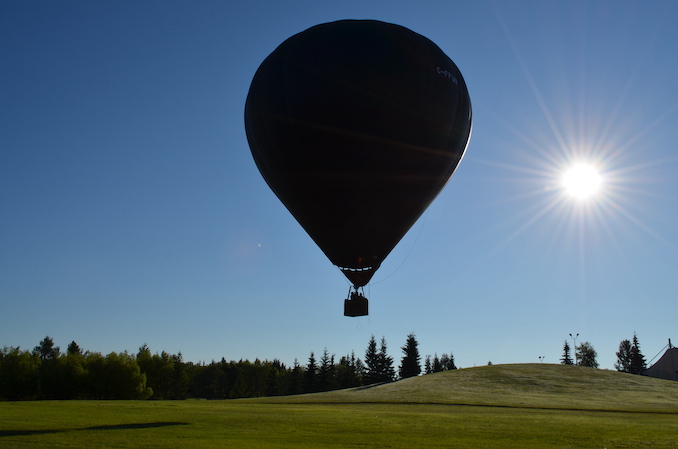
CG: “Could you talk a little bit about the Erika Project?”
GF: “The Erika Project is an idea that had been germinating for a number of years, waiting for the right ray of sunshine to sprout. Every year I have people contact me about the physical requirements for passengers. Most of the time it’s because they know someone who has a bucket list and limited opportunities left. They ask about a wheelchair and I have to say no. If it’s not secured to the basket it’s a hazard if there is any wind speed on landing. If it is secured to the basket it has to be type certified or it’s illegal (Transport Canada stuff), and that makes everything expensive. That was simmering in the back of my head in June 2019 when I broke my no chair rule with an 18-year-old girl named Erika. She was terminal with cancer and on a bucket list mission. I couldn’t refuse. It was a great flight and she loved it! Getting in and out were challenges, the chair was a challenge, and I knew I should try and make this easier for people like her. But how do I pay for it? With the equipment I have I can replace pieces as needed relatively cheaply for the rest of my flying days, but this will be $100,000 up front to build. Erika passed away that September. Shortly after I was watching an NHL highlight when I said to myself, ‘if you sell balloon panels like they sell hockey rink boards, you only need 200 people to spend $500 each. Give them a ride, include printing, and you have a win, win, win. That’s how you get an accessible balloon into western Canada’. So, that’s why this balloon’s name is Erika. She is the ray of sunshine that made this seed sprout. After getting the blessing of her parents for the project, I went to a lawyer and had an agreement written up for the panel/ride sales, I set up a special bank account, costed the system, had a plan and was ready to go in February 2020, but then COVID hit. Now that the vaccines are rolling out, it’s time to start!”
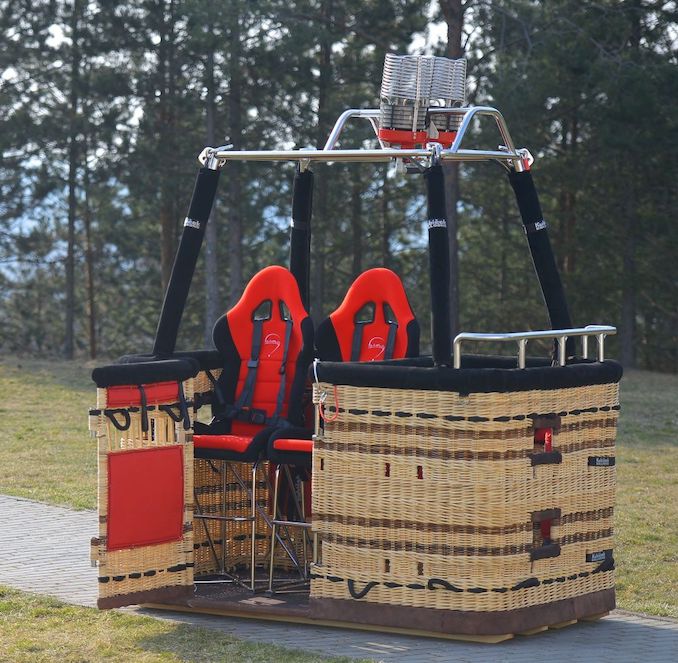
CG: “Hot air balloons are huge. How do you transport them? How many balloons do you have?”
GF: “I have two balloons that fly, two that don’t fly anymore because they failed their annual inspection, and one balloon that I use as a walk in demonstration. Hot air balloons are huge when they are inflated but pack-up quite small. Most balloons are transported in a trailer but some smaller ones are in the back of a pickup or van. There are even personal balloons called cloud hoppers that are one person only and you can fit it in the back of a car.”
CG: “I am assuming hot air balloons are only used in the warmer months, so what keeps you busy during the winter?”
GF: “Winter is actually a good time to fly a balloon. A balloon generates lift by heating an enclosed volume of air and changing its density. The colder the ambient temperature, the less heat you need to create the same amount of lift, so winter is a very fuel efficient time of year. All the fields are open, so landing options are plentiful, and with the snow cover there are no thermal instabilities (dust devils) so I can fly any time of day, not just sunrise and sunset. An added bonus is that quite often there’s a temperature inversion in the first 1000′ or so, and it will sometimes be 10 degree C warmer than the surface. When I train students I like to start them in the fall and fly through winter so their early flights are during the easiest time of year to fly. Any big repair projects are done in the winter and I have a job delivering bulk propane.”
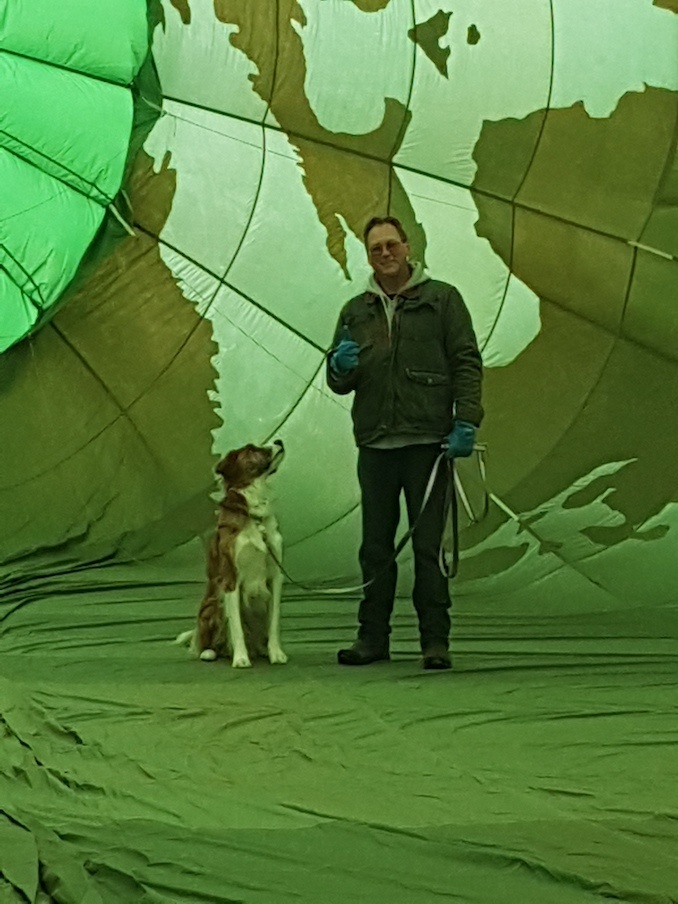
CG: “Most people I’ve talked to about hot air balloons always mention safety. Can you talk a little bit about how safe balloons are and how you mitigate risks for your guests?”
GF: “As a Transport Canada regulated aviation activity, hot air balloons have to follow all the same regulations as other aircraft. They are inspected once a year or every 100 flight hours, whichever comes first. Balloon pilots must maintain both recency and currency requirements and a category 3 medical. What makes hot air ballooning the most safe though is the basic understanding every pilot has, that every flight is optional. It’s supposed to be fun, so if it’s questionable we don’t go. I caution all my clients that ballooning is very weather dependent and to expect cancellation and rebooking. This philosophy is carried industry wide and is reflected in our collective safety record. Hot air ballooning began in Canada in 1967 and in that time there have been five fatalities in this country over thousands and thousands of flights.”
CG: “What sets Air-ristocrat apart from your competitors? Why should folks choose you?”
GF: “Air-ristocrat Balloon Rides primarily operates in central Alberta and is the only one, so we don’t really have any competitors here. What makes our operation different from most balloon companies is that we will travel to your location and we fly smaller, more intimate balloons. Our pricing structure is also different. Passengers have the option of paying a one time $50 booking fee to reserve their space, and then a $225 flight fee when they actually fly, or the full amount of $275 in advance per person.”
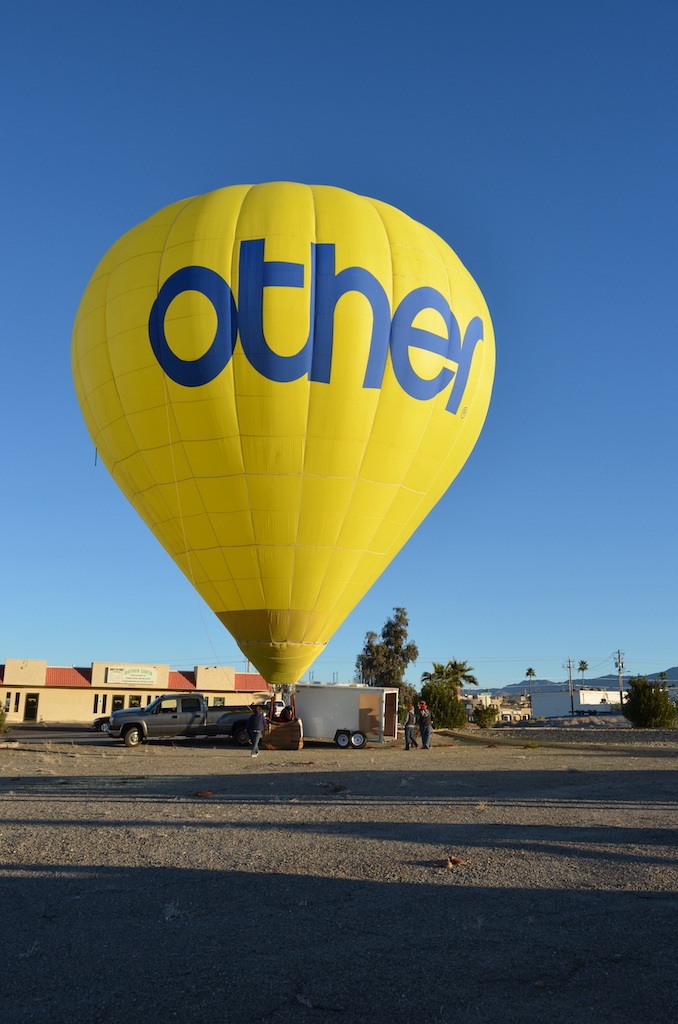
I would like to take a moment to thank Gary for all of his time. He not only answered my questions, but took the time to explain things, even the technical aspects of flying a balloon, in an easy-to-understand manner, which I really appreciated. Since we’ll all be spending more time adventuring close to home this summer, maybe the time is right to cross a hot air balloon ride off your bucket list? Pick-up the phone and give Gary a call. He’ll take good care of you!
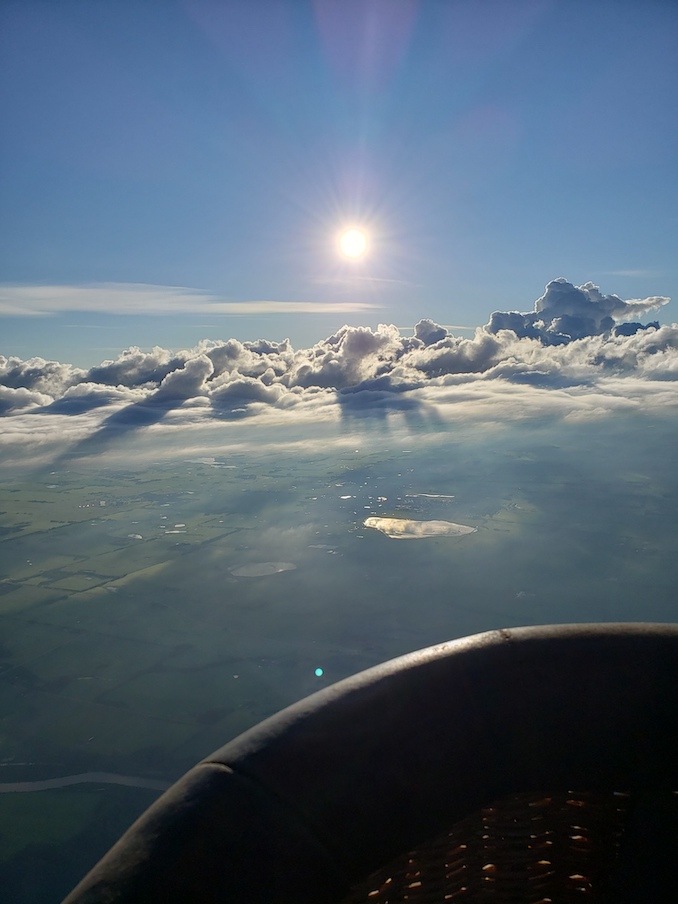
All relevant information about balloon rides can be found on the Air-ristocrat website. You can also stay connected on Facebook and YouTube.
***
About this column:
Wild Jobs is a running series that focuses on people in outdoor-related professions. It provides a brief snapshot of their career and the duties that it entails. Please see my previous post, Wild Jobs: Brewery Owner to learn more.




